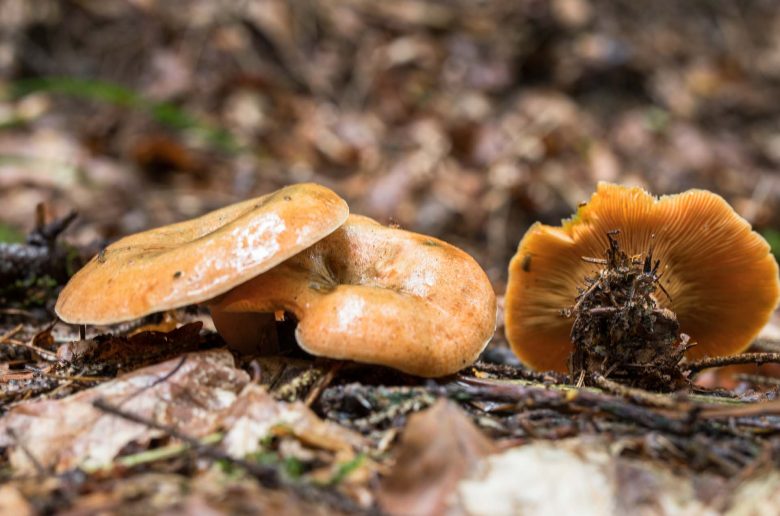Finnish: Kuusenleppärousku
Swedish: Blodriska
Norwegian: Granmatriska
German: Fichtenreizker
English Syn.: Orange milk cap
Sci. Syn.: LACTARIUS DELICIOSUS VAR. DETERRIMUS
height: 5 – 15 cm cm
trunk diameter: 1 – 3 cm
months: July – November
colours: orange with greenish parts
characteristic: red-orange milk, brittle
habitat: spruce- and mixed forest
taste: slightly spicy when consumed raw,
smell: sweet, fruity

Description
The false saffron milk cap has its name due to its resemblance to its close relative the saffron milk cap (Lactarius deliciosus). It is very similar in appearance and considered a good edible mushroom. The main upside is that these mushrooms are in many regions much more common and often grow in large groups.
Lookalikes
Different milk caps are often difficult to distinguish from one another. But if you can at least determine the genus Lactarius properly, the milk-color can give you clues about its edibility. False saffron milk caps can be confused with the poisonous birch milk cap (Lactarius torminosus). But this one has a very shaggy hat and its milk is white. This doppelganger is very hot in taste.
Much more likely is to confuse it with some other close relatives as the real saffron milk cap (Lactarius deliciosus) the Milky agaric (Lactarius salmonicolor) or the rare wine-red Bloody milk cap (Lactarius sanguifluus). They are all edible in case of doubt.
Notes
Notes for cooking: Young mushrooms where the cap is still tightly rolled up are particularly suitable for preparation. They have a very firm meat that retains its crunchy consistency even under various preparation methods. Older specimens are often brittle and can be a little crumbly. In terms of taste, these specimens are still very good, but should the choice arise, we recommend that young people take precedence in this case.
Notes on medicinal use: In folk medicine as well as TCM, saffron milk caps are considered medicinal mushrooms due to their ingredients and their high vitamin and mineral content. They should not be cut when collected so that they do not lose their milk and dry out until preparation.
Recipes
For recipes on milk caps see Safron Milk Cap (Lactarius deliciosus).
We have compiled this overview with the best of knowledge and belief, but do not claim to be complete and reserve the right to make errors.
Learn more about poisonous mushrooms and mushroom poisons here
↓↓↓

